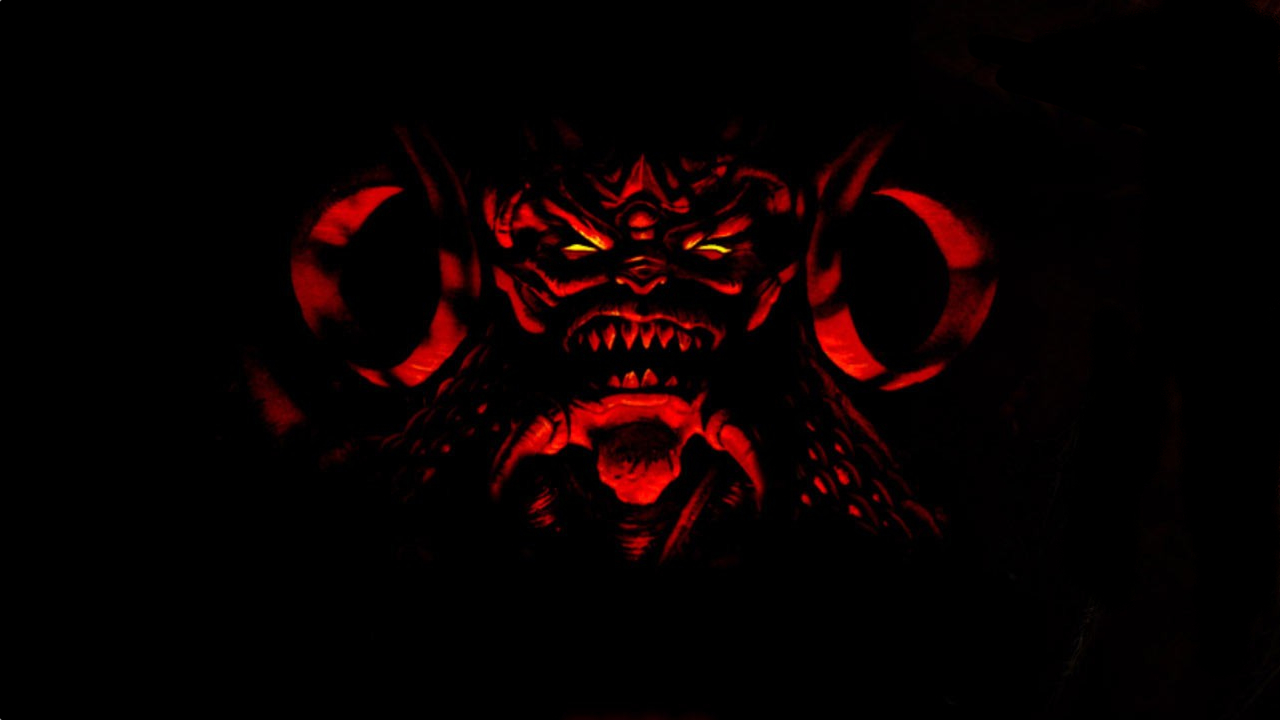The skeletons of the town open with the soft strums of a guitar and a howl. It evokes an otherworldly, hostile feel. Here, in the hamlet of perpetual night, Tristram is no safer than the myriad catacombs that snake beneath it.
Whether you are a Warrior, Rogue, or Mage, you begin Diablo as a wanderer, intent on vanquishing the rumours of the evils within.
A town paralyzed with fear? Check.
An unspeakable evil? Check.
Hammy voice acting? Check.
Diablo had the basic formula of a generic role-playing game twisted just that little bit darker. The isometric game wasn’t complex in its story: there’s a missing Prince and you have to find that Prince. Along the way, if you could kill the traitorous Archbishop Lazarus, that’d also be totes cool.
It’s not a complex story. For 99 percent of the game, it’s really simple and straightforward.
But the moment you exit the confines of relatively safe Tristram and head north towards the abandoned cathedral, you see something worrisome. Basking in the warm glow of the old church’s hellish light, there’s a mangled body, barely eking out a pulse.
He begs you, with all the hammy voice acting in the world, “Please, listen to me.” The man sounds relatively inconvenienced, but with the soft riff in the background, it works. It’s passable.
“The Archbishop Lazarus, he led us down here to find the lost prince. The bastard led us into a trap! Now everyone is dead… killed by a demon he called the Butcher. Avenge us! Find this Butcher and slay him so that our souls may finally rest.”
Before you could even think about saving the Prince or stopping Diablo (wherever he may be) or Archbishop Lazarus, you had a more immediate goal. You had to take revenge for the townspeople of Tristram by stopping this Butcher.
But how do you find him?
The catacombs are dark, inky black places. There’s an oppressive, evil gloom that makes looking into rooms difficult, and the loudness of each hit, skitter, snarl, and cackle exemplifies this sense of impact. The heavy fog of war restricted much of your movement, and the isolation you felt as you wandered through the catacombs alone made the entire place feel that much more oppressive.
Without warning, as you open another door of many, there’s a growl. “Aaaah, fresh meat!”
And you end up fighting for your life.
Diablo has never been about the complex plot or the strong characterization. Likewise, it’s never been about shocking originality or ground-breaking innovation.
Instead, what makes it work - and work fantastically - is its unrelenting atmosphere and immersive might. The Butcher is the first boss that you come across, but the game cleverly refuses to tell you exactly where he is. All you know is that somewhere in the darkness of the catacombs is a monster called the Butcher, killing and collecting people and their remains.
And as you peruse through the catacombs, you gain a false sense of security through the game’s mechanics. Each level develops a certain stop-kill-go rhythm where you clear out a room, collect all of its loot, and proceed. Occasionally you’d venture back to Tristram and get better items or buy potions, but you’d always return and do the same thing.
You know that bosses exist - you know you’re going to run into the Butcher. But for those playing Diablo for the first time, the Butcher isn’t some end-game monster with in-game cutscenes or warning signs. Not in the slightest.
In a room somewhere within the catacombs, there’s a subtle dread as shadowy things lurk just beyond your peripheral vision. The fog of war is an active enemy, forcing you to guess what each room contains. For the most part, it’s usually skeletons or scavenging minor demons or something annoying yet innocuous. Standard mooks.
But there’s always that room. Nestled in the labyrinth is that room. When you open it, not only does it greet you with that beast’s inhuman, guttural, hungry snarl, but it also greets you with his world, his home. Carpeted in fresh and dried blood, the Butcher’s home is decorated with bodies like a Victorian dining room straight out of hell. The collected remains - the remains the people of Tristram told you about with bated breaths and passionate, insane ramblings - hang like portraits on his walls or dangle like meat from his hooks.
Everywhere else in those catacombs has dark, but clean floors. Dust on the sarcophagi. Rusted gates.
But here, there’s blood. Chaotic, gory beauty. Red fills the screen, and with an unnatural swiftness, the Butcher comes at you, his cleaver swinging. And boy, does he ever hit hard.
After you kill him, you feel a sense of elation and catharsis. You’ve cleared the terror that’s haunted Tristram. But in doing so, it hammers home the endlessness of this evil - if Tristram was scared by the inhumanity of this inhuman thing, then what else lurks within the seemingly endless deep?
Diablo’s always been about crafting an atmosphere to help bolster a weak plot. Its world is rich and complex. Its geography is rife with esoteric, yet interesting information and its people live under the clasp of insurmountable, supernatural challenges. It’s a by-the-book power fantasy, driving the player ever onwards through a series of hostile environments until you can reach no more.
But what the Butcher exemplifies is a living world. A really grim world, mind you, but a living one. It has its own room, blending perfectly into its environment. The door that you open to find the Butcher isn’t at the end of some long corridor - it’s just there. You find it by accident most of the time, and its attacks are a mix of hunger and surprise.
The Butcher exemplifies and foreshadows a particularly harmonious design in Diablo’s levels. In a way, the Butcher is a reward for the player. He’s an expansion of the world of the Sanctuary. He doesn’t scream end-boss because he isn’t - he’s an apex predator of the catacombs, a product of a natural environment.
Like Bartuc the Bloody, Archbishop Lazarus, or the tomes of the Horadrim, they’re tidbits of malevolence and suffering that reveals a world far more intricate and complex than “find the prince.” They don’t stick out like sore thumbs: they’re naturally embedded into their levels, and that in-turn gives the levels life. Diablo isn’t about the plot - it’s never been about the plot.
And through experiencing the game, you get a feel for its depth, its complexity. It’s difficult to describe Diablo in a positive other than “it has a good atmosphere” because its story is perfunctory. Instead, it’s more of a cobweb of mini-tales. The darkness is peppered with varying evils, falls from grace, and corruptions more twisted and tragic than its simplistic main quest suggests.
It’s an anthology in videogame format, and the dungeons are its pages. You traverse through them, coming across the monsters that call its vile lairs home, and each one tells a little bit more about the world they live in. And like the Butcher, these tales are relentless, seemingly unstoppable, and refuse to let you go.



